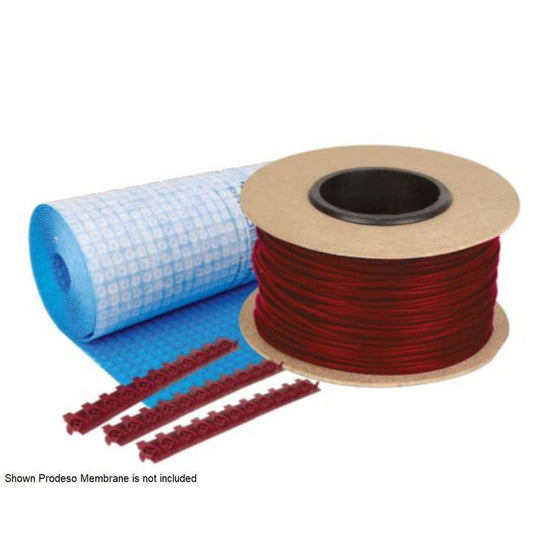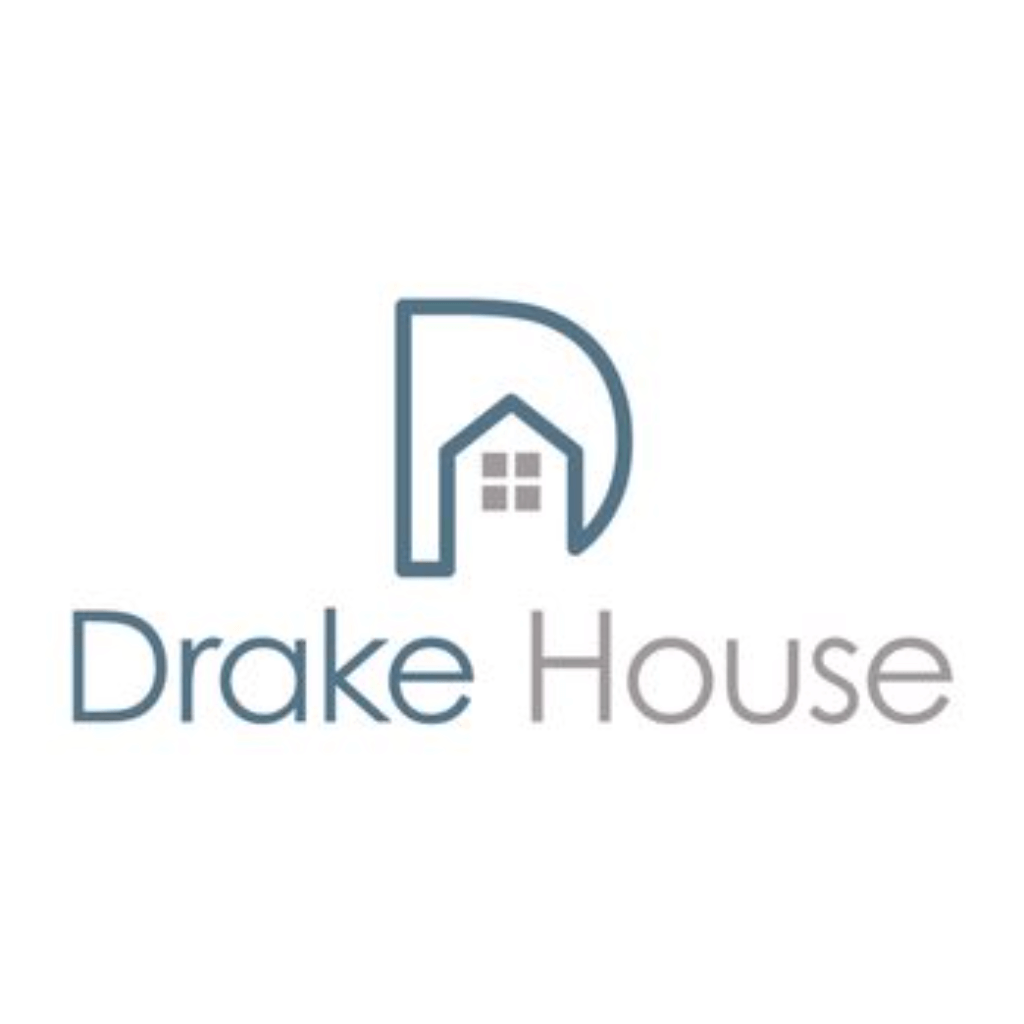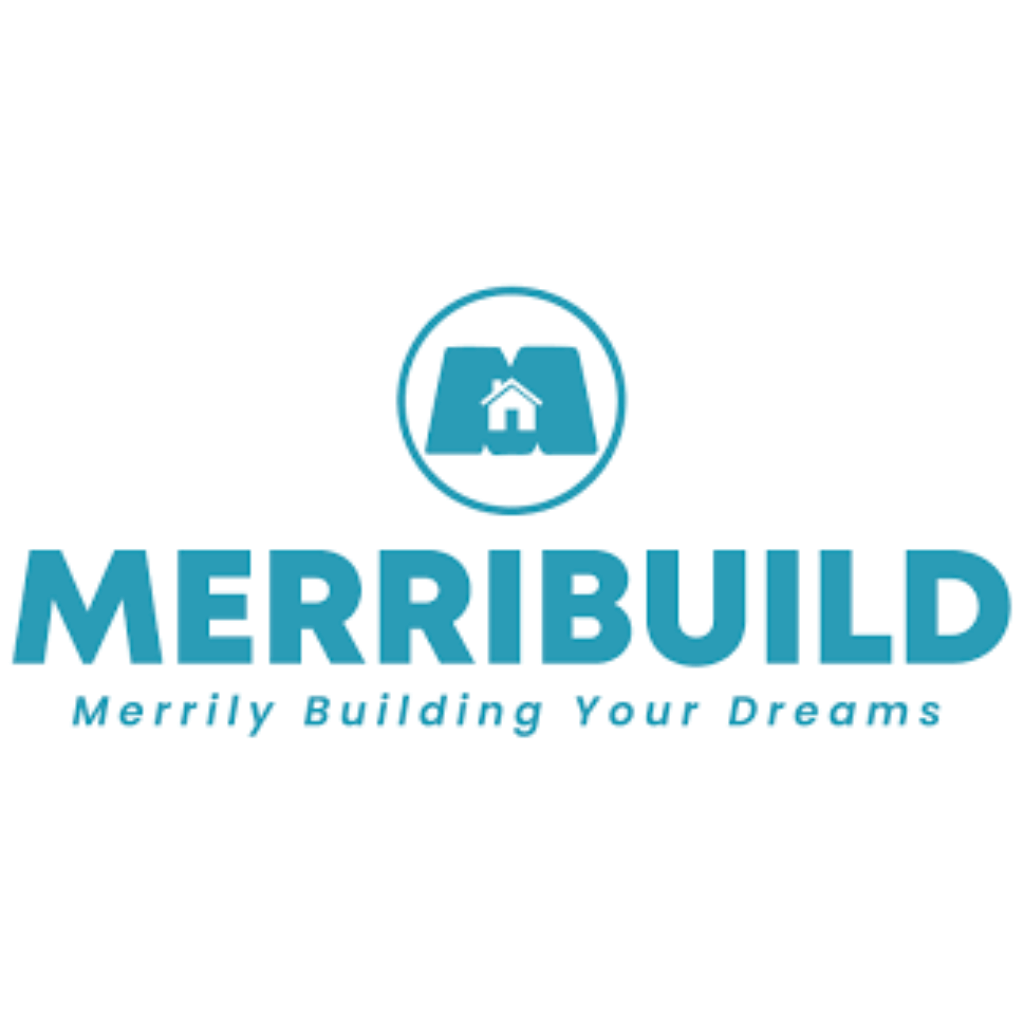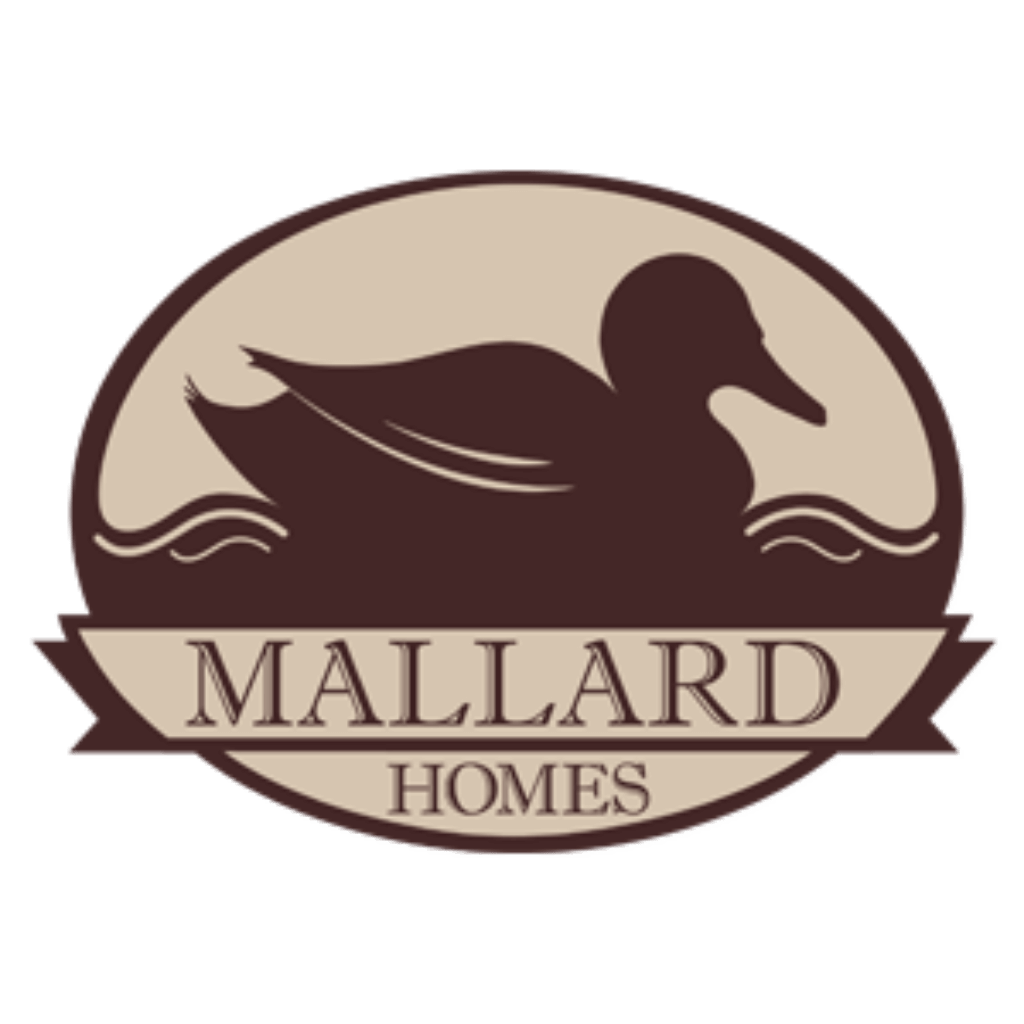SKU:TCT240-KIT-OT-315
WarmlyYours TempZone Cable 315′ 240V Radiant Floor Heating Cable System Kit With nSpire Touch Programmable Touchscreen Thermostat
WarmlyYours TempZone Cable 315′ 240V Radiant Floor Heating Cable System Kit With nSpire Touch Programmable Touchscreen Thermostat
Couldn't load pickup availability
- Free Shipping on Orders Over $400
- Same-Day Order Processing
- Easy Monthly Installments Starting at 0% APR*
• Text or call 800-614-7411
• Email support@usbathstore.com
• Start a live chat
Our team is available to serve you 8:00 AM - 11:59 PM ET, 7 days a week.
TempZone™ Floor Heating Cable brings radiant warmth and comfort to any room. This freeform cable provides the ultimate flexibility, making it easy to customize installation for rooms of any size and shape. The cable can be installed with either Fixing Strips or the Prodeso Cable Installation Membrane. The Fixing Strips are more economical but also more labor-intensive while the membrane provides long-lasting uncoupling benefits for tile or stone floors.
The WarmlyYours floor heating kit with cable is designed for applications until tile, stone, and nailed hardwood floors. WarmlyYours TempZone™ Floor Heating Cable brings radiant warmth and comfort to any room. While ideally suited to provide complete floor heating coverage in rooms with unusual dimensions, the TempZone™ Floor Heating Cable can be used in any room, providing an alternative for installers who prefer the flexibility and freedom of working with loose cable. TempZone™ Floor Heating Cable is ultra-low EMF by design. It features a twin conductor with a 15’ cold lead and it can be installed at 3” or 4” intervals to meet the needs of any installation. Along with comes the programmable nSpire Touch which features a 3.5” full-color touchscreen and a modern design that instantly augments any room’s style. With an integrated Install Wizard, it’s never been easier to set up a radiant heating system according to your preferences and schedule. The nSpire Touch allows you maximum control over the floor temperature with 4 programmable events for each day of the week, which is great for “Goldilocks households” where there will be frequent adjustments to the temperature or thermostat’s schedule until it’s “just right.” This dual voltage (120V/240V) thermostat puts the control where it belongs, at your fingertips. Includes floor sensor.
What's Included
- TempZone™ Floor Heating Cable
- Circuit Check
- nSpire Touch Programmable Touchscreen Thermostat
- Cable Fixing Strips
- Floor Sensor
Not Included
- Bathtub, Toilet, Faucet, And Other Bathroom Accessories
Features
- Can be installed with either fixing strips or the Prodeso Membrane
- Installation with fixing strips is more economical and provides more design flexibility
- The energy-efficient cable outputs 3.7-watts per linear foot
- Twin conductor cable with a thickness of 3/16”
- Heat output of between 9 to 15 watts/sq. ft., depending on spacing
- Covered by our unbeatable 25-year No Nonsense™ Warranty
- Wet Location and UL Listed for both US and Canada
- Circuit Check available to ensure fault-free installation
Why Install Electric Floor Heating?
☑ ComfortThe number one reason to install electric floor heating under a new floor is absolutely the comfort, a heated floor is literally a luxury you can feel but you probably already knew that. |
☑ SafeThe number one reason to install electric floor heating under a new floor is absolutely the comfort, a heated floor is literally a luxury you can feel but you probably already knew that. |
☑ AffordableElectric floor heating is inexpensive if you put it in while you’re already replacing or installing a floor. In fact, the cost of electric floor heating systems is as low as $5 per square foot. Unlike hydronic systems, electric floor heating systems don't require expensive pumps or water heaters. Additionally, According to Zillow, homes with heated floors typically sell for 3.2% more. |
☑ FlexibleElectric radiant floor heating can be used as your primary heat source or as a way to add supplemental heat to rooms that are tricky to heat like the basement or a room above a garage. |
☑ CleanElectric radiant floor heating is a very clean heat since it doesn’t rely on forced air, which can circulate dust and other allergens. |
☑ Forced Air AlternativeFloor heating systems aren't loud like a central furnace, don't dry out the air, and require no regular maintenance. |
☑ Saves EnergyElectric radiant floor heating has higher levels of energy efficiency than central air systems because it heats the people and objects in the room directly via infrared heat. Floor heating systems are also inexpensive to operate, you can heat a typical bathroom for pennies a day. |
☑ Easy-to-Use ThermostatsThe secret to any great heating system is a great control and we've got an entire line of them for our electric floor heating systems. |
Specifications
| SKU | TCT240-KIT-OT-315 |
| UPC (GTIN-12) | 881308052669 |
| Amps | 4.9 A |
| Ohms | 48.5631 Ohm |
| Watts | 1166 W |
| Btu per hour |
3979 |
| Width |
0.25" |
| Length | 315' |
| Depth | 0.25" |
| Weight | 12.45 lbs |
| Voltage | 240 V |
| Coverage (Sqft) |
98.44 Sqft |
| Floor Types | Commonly installed beneath tile and stone |
| Shipping Width | 12" |
| Shipping Height | 4" |
| Shipping Length | 12" |
| Shipping Weight | 15.9 lbs |
| Connection Method | Hardwired |
Warranty / Certifications

| Approvals | cULus listed |
| Ingress Protection Ipxx Rating | IP20 |
| Warranty | 25 years |
| Wet Location Listed | US, Canada |
WarmlyYours’ 25-Year No Nonsense™ Warranty is the most comprehensive warranty in the industry. In the event of a defect, we cover not only the repair or replacement of the TempZone™ system but ALSO any labor costs AND flooring materials required to perform the repair. We do not cover the cost of flooring that needs to be replaced in the event of a repair necessitated due to damage. If a product is damaged by a power surge, that would not be covered by our warranty.
Documents & Files
General Publications
Installation
- Tempzone Floor Heating Cable Installation Manual (English)
- Manual de instalación del cable de calefacción por suelo radiante TempZone™ (Spanish)
- TempZone™ Cable Nailed-Down Hardwood Installation
Operation Manuals
- nSpire Touch (UDG4-4999) Interactive User Manual
- nSpire Touch (UDG4-4999) User Guide
- nSpire Touch UDG4-4999 Interactive User Manual Spanish
Project Planners
- Floor Heating Request for Quotation Form
- Permanent Fixture Sample Draw
- Heat Loss Calculation Request Form
- Prodeso And TempZone Cable Quote Calculation Sheet
- Calculating Project Dimensions
- TempZone Rolls Materials And Tools Checklist
- TempZone Cable Materials And Tools Checklist
Warranties
Technical Information
Technical Specifications
- TempZone Twin UL Wet Location Certificate-USA
- TempZone™ Floor Cross Section using Glued-Down Engineered Wood over Concrete
- TempZone™ Floor Cross Section using Nailed Down Hardwood Floor over Plywood subfloor
- TempZone™ Floor Cross Section using Resilient Flooring over Concrete
- TempZone™ Floor Cross Section using Resilient Flooring over Insulated Concrete
- TempZone™ Floor Cross Section using Tile and Self Leveling Cement over Concrete
- TempZone™ Floor Cross Section using Tile and Self Leveling Cement over Insulated Concrete
- TempZone™ Floor Cross Section using Tile and Thin-Set over Plywood subfloor
- TempZone™ Floor Cross Section using Tile and Thin-set over Concrete
- TempZone™ Floor Cross Section using Tile and Thinset over Insulated Concrete
- TempZone™ Floor Cross Section using Tile, Thin-set, Backer Board over Plywood Subfloor
- Tempzone 3.7 Cable Drawing
Sell Sheets
- Prodeso Membrane vs. Cable Strips Comparison Chart
- TempZone Comparison Chart
- TempZone Floor Heating Cable Sell Sheet
Catalogs
Case Studies
- 5TH Avenue Condominiums - New York City, NY - TempZone™ Electric Radiant Floor Heating
- Chicago Housing Authority Senior Living Apartment Building - Chicago, IL - TempZone™ Electric Radiant Floor Heating
- LUX 74 Residences - New York, NY - TempZone™ Electric Radiant Floor Heating
- Mandarin Oriental Hotel - Las Vegas, NV - TempZone™ Electric Radiant Floor Heating
- Ocean House Hotel & Residences - Westerly, RI - TempZone™ Electric Radiant Floor Heating
- Universal Design Living Laboratory - Columbus, OH - TempZone™ Electric Radiant Floor Heating
Legacy Documents
Videos
WarmlyYours Introduction to TempZone Floor Heating Cable System Kit
WarmlyYours TempZone Cable Short Demo
WarmlyYours How To seal An End Cap On A TempZone™ Electric Floor Heating Cable 2
WamlyYours How to Install The Tempzone Cable Floor Heating System
Frequently Asked Questions
How do I work with my electrician to install WarmlyYours electric floor heating?While WarmlyYours electric radiant floor heating systems are typically installed by your floor covering contractor, a licensed electrician is recommended for the final thermostat hook-up. With every quote, we provide an Installation Plan layout, together with an electrical plan that has all the info required for the electrician. |
How can I determine what I need for my floor heating project and how can I find out what my floor heating system will cost?You can use the Instant Quote Tool, which gives you many options for your floor heating coverage. Use this interactive tool to design your room online and receive an instant quotation with product recommendations, rough-in and installation kits, cost of your control, etc. Planning your floor heating project is made easy when using our Instant Quote Tool. |
Is electric floor heating safe and what about EMF?
Our electric radiant floor heating systems have withstood rigorous safety testing and earned the UL listing. They produce much less EMF than common household appliances like your TV or vacuum cleaner. The EPRI (Electric Power Research Institute) tests all electrical devices and publishes the data. Many common household appliances are tested at a distance of 6 inches. The test results indicate that on average, the EMF emitted for the following appliances, measured in Milligauss (mG) units, is: Vacuum Cleaner: 300 mG Microwave: 200 mG Portable Heater: 100 mG Dishwasher: 20 mG Washing Machine: 20 mG WarmlyYours TempZone™ (Twin): 1.8 mG |
How do you keep a sunroom warm in the winter?
Sunrooms can be very cold during the winter months. While a furnace may push some warm air into the room, the large number of windows, exterior walls, and other causes of heat loss in a sunroom will typically keep it from having a comfortable temperature level. Floor heating and radiant panels will add radiant heat, which the human body absorbs faster than other forms of heat, to the room so that it feels warm even at lower temperatures. |
What type of flooring can I install along with an electric floor heating system?WarmlyYours’ TempZone™ product is most commonly installed under tile, stone, and marble flooring, but can also be installed under many other popular floor covering options such as hardwood, vinyl and linoleum. We also have our Environ system, which is an electric floor heating product as well and is specially designed for installation under carpet (in the U.S. only), laminate and floating wood. WarmlyYours can accommodate any flooring type with either of the electric radiant floor heating products that we offer. |
How do I know if I am installing my electric floor heating system properly?Please keep in mind that you must check your electric floor heating system with a digital ohmmeter in conjunction with a Circuit Check™. Take an initial reading as soon as you take the product out of the box to verify that it is within -5% / +10% of the values stated on the product’s label. This will give you a basis of comparison for future readings. Take a second reading once you have positioned the system to match your custom installation plan. It is also advisable to take an additional reading in the middle of the tile installation, just to make sure that the Circuit Check™ is doing its job. Then, take a final reading when you are finished with the floor installation and are ready to hook up the thermostat.The Circuit Check™ is a tool developed by WarmlyYours to give you peace of mind and ensure trouble-free installations. Simply hook up the cold leads to the tool while you position the system to match your custom installation plan. The Circuit Check™ will continuously monitor the continuity of the circuit during the installation of your system and during the installation of your flooring. The Circuit Check™ beeps immediately when a short in the system is detected, alerting you to a potentially damaged cable in the area you are working, before you lay the tile over the electric floor heating system. The WarmlyYours technical support team is available 24/7 to provide assistance if the alarm sounds, or if you would have any questions during your installation. |
Should I be concerned about electric floor heating melting the toilet connection's wax ring?To prevent any overheating, we recommend that you do not install any electric radiant floor heating elements closer than 4" from the wax ring. |
Will the flooring manufacturer still warrant with electric floor heating underneath?Always check with the flooring manufacturer to see what they will cover when it comes to floor heating. In most cases there will be a floor temperature limit - this can be programmed into a programmable or smart thermostat. Check for installation instructions and requirements before adding floor heating. |
Can I have one thermostat for my open floor kitchen, dining room and living room?We usually recommend that you have an individual thermostat for each room. However, if it's an open floor plan and your local electrical code allows you to have one controller for the whole area, then it's definitely possible to have it all controlled from one thermostat. |
If I have extra cold lead wire, can I trim off what I don't need for my installation?Yes. Unlike the heating cable for electric floor heating, the cold lead wires can be trimmed or lengthened with additional lead wire which can be purchased from WarmlyYours. |
Should I add insulation before installing electric floor heating and how will that affect the system's performance?TWhen installing electric floor heating over a concrete slab, insulating underlayments like CeraZorb and Cork are highly recommended to ensure efficient operation, faster heating times and warmer floor temperatures. |
What temperature should I set my heated floor to?The perfect room or floor temperature is always going to be a personal preference. However, we do see that our customers will usually set their floor temperature to somewhere in the 80°F to 84°F range. |
How much does it cost to run an electric floor heating system?The answer to this question will depend on a whole host of variables related to electric floor heating, including, but not limited to, the run time (for supplemental heating, we usually recommend between 4-8 hours per day), the electric radiant floor heating system you're using, the total square footage, and your local electrical cost. Typically, the cost is just a few cents a day. To figure out how much electric floor heating might cost to run for you, make sure to use our interactive Operating Cost Calculator. |
Can I put electric floor heating in the shower?Yes, we have TempZone Shower and Bench mats with sizes designed specifically for shower installation and they are wet location listed for for installing electric radiant floor heating to a shower. |
Do I have to replace my floor to install electric floor heating?Yes. While there are some floor heating systems that can be installed beneath floor joists, most electric radiant floor heating systems will need to be installed beneath the floor itself. This is why the best time to install electric floor heating is during a remodel or as a part of a new construction, when a floor is being installed anyways. If you're interested in alternative radiant heating methods, check out our Radiant Panels, which are wall-mounted and use infrared technology to provide supplemental heating. |
Do I need insulation when installing an electric floor heating system over a concrete slab?When WarmlyYours electric floor heating systems are being installed on a concrete slab, we strongly recommend adding a layer of insulation over the slab prior to installing the system. While our electric floor heating provides up to 25% more heating power per square foot than many of our competitors, the slab will always act as a "heat sink." Some of the heat that would otherwise be transferred to the flooring surface will remain in the slab, causing the floor’s surface temperature to be considerably lower. This is true with any electric radiant floor heating system. When installed on top of a concrete slab without insulation, it is generally accepted that electric floor heating will take the chill away from the floor and provide a small amount of warmth. Adding insulation on top of the slab and beneath any electric radiant floor heating system will allow a greater percentage of the heat generated to transfer to the flooring surface. This results in greater efficiency and therefore faster warm up times, higher expected surface temperatures and lower energy usage. The floor will have the capacity to warm to a comfortable temperature, and in some cases can be employed as the primary heat source for that room. The recommended types of insulation are natural cork, insulated tile backer boards and insulated underlayment, such as CeraZorb synthetic cork. |
What voltage does WarmlyYours floor heating systems utilize?The floor heating systems are offered in both 120 volt and 240 volt for the North American market. A 208 volt breaker panel can also accommodate our 240 volt floor heating system. It is important to note that the energy consumption will be the same: a 240 volt system will not cost more to operate than a 120 volt system. You are billed in kilowatts, and the 120 volt and 240 volt systems use the same amount of kilowatts. WarmlyYours often specifies a 120 volt system in smaller projects while a 240 volt system is typically recommended for larger projects (120 square feet of electric floor heating coverage or more). The benefit of switching to a 240 volt system is the reduction in amperage. Our programmable thermostat can control a radiant floor system up to 15 amps. The 120 volt system will reach 15 amps at 120 square feet of electric floor heating coverage. However, the 240 volt system will reach 15 amps at 240 square feet of electric floor heating coverage, allowing a much larger system to be connected to the thermostat. For installations over 240 square feet, a relay contactor or power modules are needed. |
Can the floor heating be set to turn on at certain times when we know we will use those areas and need heating?Yes, with our programmable thermostats, you can choose which days and times the floor heating turns on for your comfort. With a Smart thermostat, you can also control these options from your phone while away from home. |
How will electric floor heating affect my wood floor?WarmlyYours nSpiration controls are equipped with an in-floor sensor to precisely control the floor's temperature to comply with the wood manufacturer's temperature recommendation. |
Can you heat under the appliances, fixtures, or furniture in a laundry room, mudroom, or utility room?No, it is recommended that floor heating only be installed in the areas that you will walk on. Heat can become trapped if installed under objects that do not offer enough clearance for air to circulate (such as a washer or dryer). |
What is the total power/amperage that the electric floor heating system draws and does this system need a dedicated circuit?The amount of amperage draw depends upon how large the area is that you are heating. For coverage of areas less than 30 square feet, the system will draw less than 3 or 4 amps. If you have a larger area over 120 square feet of heated space, then you may need a larger breaker plus additional controls. No matter what the size of the area you choose to heat, we recommend a dedicated circuit for your electric radiant floor heating system. |
Can I use electric floor heating as a primary heat source?Yes, in most cases, an electric floor heating system can be effective as a primary heat source. However, our TempZone™ and Environ™ systems are most commonly used as a secondary heat source, providing floor-to-ceiling radiant heat to any room in your home where you desire more warmth and comfort. If you are considering electric floor heating for an addition to your home, such as a sunroom where you have no other source of heat, WarmlyYours offers an innovative online tool which calculates approximate heat loss. This tool can help you to determine if a WarmlyYours’ electric radiant floor heating system will provide your desired comfort temperature throughout the year. You can access the Heat Loss Calculator or you can call us at (800) 875-5285 and a Customer Service Representative will make the calculation for you. |
Can carpet be used over underfloor heating?Yes, carpet does not significantly impact the effectiveness of floor heating. In fact, we have Environ Flex Rolls made specifically for under carpet installation (U.S. only). |
Is there anything different I should do when installing bamboo flooring over a radiant heating system?It's important to take extra care when installing bamboo flooring over a radiant heating system. Make sure that you read both the bamboo flooring's and the radiant heating system's installation instructions carefully before beginning. |
Do I need to acclimate the bamboo flooring to my home's temperature and moisture levels before installation?Yes, acclimation is an important first step to extending the life of bamboo flooring. Typically you want to place it in the room where you’ll be installing it for at least 3 to 7 days, with the radiant heating system on. This allows the bamboo flooring to acclimate to the room’s standard temperature and balance with the environment. However, make sure to always defer to the bamboo flooring manufacturer's instructions. |
Do I need to leave the radiant floor heating system set to one temperature with bamboo flooring?When using bamboo flooring over radiant heat, it is best to set the temperature and leave it at that temperature. Bamboo flooring will naturally withstand temperature changes(it’s one of the many advantages of bamboo flooring), however, it performs best when radiant heat is set to a constant temperature without changing more than a few degrees per hour. Also, never let the "floor temperature" for the radiant heating system exceed the maximum temperature identified by the flooring manufacturer. |
With bamboo floors, can I add the radiant heat to just a specific section of the floor or does the whole floor need to be heated?It is recommended that bamboo flooring is heated evenly with a "full coverage" design for the heating system. |
Is bamboo flooring a good selection for radiant heated floor?The short answer is yes but there are some other factors to keep in mind. For example, Bamboo flooring typically has a higher thermal resistance than tile, so the heating performance may be slightly diminished. Wood, bamboo, linoleum, cork and carpet all have different R-values (from 1 to 3) and they typically use an underlayment or a pad with an R-value of 1 to 2. The question naturally arises whether the radiant heat can effectively heat through all of that. Radiant heat transfers energy depending upon the density, humidity, and thermal resistance of the object. Ideally, the lower the R-value in the floor and underlayment, the better. Some underlayments, made from synthetic rubber, have extremely low R-values and are ideal for radiant heated floors because they allow the heat to transfer through more quickly. |
Can I have one thermostat for my open floor kitchen, dining room and living room?We usually recommend that you have an individual thermostat for each room. However, if it's an open floor plan and your local electrical code allows you to have one controller for the whole area, then it's definitely possible to have it all controlled from one thermostat. |
Can I put furniture on top of underfloor heating?Yes, but any furniture that may trap heat, such as pieces with an enclosed bottom, should be avoided. Furniture on legs with a clearance of at least 3" is permissible. |
Can the floor heating be set to turn on at certain times when we know we will use those areas and need heating?Yes, with our programmable thermostats, you can choose which days and times the floor heating turns on for your comfort. With a Smart thermostat, you can also control these options from your phone while away from home. |
Does the bamboo flooring have to be a certain thickness to allow radiant heating to work properly? Can underlayment (moisture/sound barrier) still be used?Check the flooring r-value before installing. As long as the flooring product has an r-value of 1 or less, it should work well with electric floor heating. We suggest the underlayment be placed under the heating layer. The heating element should be placed between the underlayment (preferably at least 1/4") and the flooring. |
How can I make my living room feel warmer?Simply set your floor heating thermostat to a comfortable temperature to maintain a nice warm floor. Your room will feel warmer and, typically, your furnace will cycle less often. |
Should you leave underfloor heating on all the time?An electric underfloor heating system doesn't need to be left on all the time. The system can be completely turned off or set back to a lower temperature when not in use. If you have a programmable floor heating thermostat, then the system can also be set to operate only during specific times. |
What if I have cracks in my concrete slab? Will that affect the floor heating installation?Make sure any cracks or raised edges are sanded down before installation. Seal and patch cracks where possible. If needed, pour a layer of self-leveling cement to make sure surface is level and flat. Then proceed with instructions to install desired floor heating system and flooring. It is strongly recommended that an insulating underlayment be installed between the slab and heating element to prevent heat loss. |
Does the laminate flooring have to be a certain thickness to allow radiant heating to work properly? Can underlayment (moisture/sound barrier) still be used?Check the flooring r-value before installing. As long as the flooring product has an r-value of 1 or less, it should work well with electric floor heating. We suggest the underlayment be placed under the heating layer. The heating element should be placed between the underlayment (preferably at least 1/4") and the flooring. |
How do you avoid a "spongy" feel for wood floors when using a floor heating system while still providing optimal heat transfer?We recommend our floating floor heating system for floating wood floors, such as laminate or bamboo. With an insulating layer between the subfloor and heating system, the heating cables will settle into the underlayment making for a flat surface for the floor covering. |
Can I put furniture on top of underfloor heating?Yes, but any furniture that may trap heat, such as pieces with an enclosed bottom, should be avoided. Furniture on legs with a clearance of at least 3" is permissible. |
How thick are the roll/mat and electrical cord?The roll and mat is 1/16" thick, and the cord is 1/4" in diameter. |
Will this burn the laminate or carpet?No, as long as a licensed electrician properly installs it. We suggest setting your nSpiration Series thermostat control at a maximum of 85°F when the system is installed under laminate flooring. See your laminate manufacturer for their requirements regarding their product when used with electric radiant heat. |
Should you leave underfloor heating on all the time?An electric underfloor heating system doesn't need to be left on all the time. The system can be completely turned off or set back to a lower temperature when not in use. If you have a programmable floor heating thermostat, then the system can also be set to operate only during specific times. |
How can I make my living room feel warmer?Simply set your floor heating thermostat to a comfortable temperature to maintain a nice warm floor. Your room will feel warmer and, typically, your furnace will cycle less often. |
How do I prepare my living room for extreme cold?Having floor heating installed and set to a higher temperature during particularly cold days will help to maintain a comfortable temperature level by providing supplemental heat |
What wood species are recommended or not for floor heating? Is Engineered or solid better? Nailed down or floating?The most important factor for the wood floor chosen is structural stability. According to the USDA Forest Service, this list shows most dimensionally stable to least: Mesquite Australian Cypress Teak Santos Mahogany American Cherry South Yellow Pine Douglas Fir American Walnut Brazilian Cherry Hard Maple Red Oak True Hickory American Beech Engineered is the most structurally stable compared to natural hardwood, so it will work the best with floor heating. If you do want to go with Hardwood, quartersawn or riftsawn narrow planks are the most structurally stable and would work best for this application. Overall the most important factor for the room is relative humidity. Keeping a consistent humidity and temperature in the home will help wood floors last for many years to come. |
How can I make my room warmer without a heater?Floor heating will typically add the most heat to supplement an existing heating source and it will not take any extra space since it is embedded in the floor. If you are not remodeling your floors but have some open wall space, you should mount a radiant panel. For the most effective results, install the panel so that it points toward the area where you will spend most of the time. |
What if I have cracks in my concrete slab? Will that affect the floor heating installation?Make sure any cracks or raised edges are sanded down before installation. Seal and patch cracks where possible. If needed, pour a layer of self-leveling cement to make sure surface is level and flat. Then proceed with instructions to install desired floor heating system and flooring.It is strongly recommended that an insulating underlayment be installed between the slab and heating element to prevent heat loss. |
Can the floor be waterproofed and still have floor heating?Yes, we offer several options to help make your floor heating system water resistant or waterproof. Our TempZone product line is designed for wet areas - making it completely safe for rooms that will have water on the floor at times or may experience leaks or flooding. We also offer waterproofing bands for our TempZone Cable + Prodeso Uncoupling Membrane system. Allowing you to waterproof all seams and the perimeters of the wall - guaranteeing that your floor heating system stays safe and prevents water from leaking to areas below. |
How does electric floor heating work?Electric floor heating works by having an electric heating cable installed underneath the flooring (embedded or floating, depending on the system and floor type), which is then wired to a special thermostat (either one specifically designed for electric radiant floor heating, like a WarmlyYours’ nSpiration Series control, or a third-party thermostat). When turned on, the heating cable emits heat upward through the flooring which is then radiated throughout the room, heating all solid surfaces. |
What is the recommended temperature for a heated kitchen floor?Everyone has their own comfortable temperature setting, but we typically find that our customers use their thermostats to set the "floor temperature" of the system in the 78°F - 84°F range. |
Can you use a sunroom in the winter?Yes, sunrooms can be used in the winter, just activate your floor heating or radiant panel and turn your sunroom into a 4-season room. You will notice a tremendous difference in the room comfort, especially with the thermostat set to maintain a desired ambient temperature. WarmlyYours thermostats will do the work for you by energizing the floor for longer cycles. |
Will electric floor heating help with moisture issues like mold and mildew?Yes, the drying effects of electric radiant floor heating will reduce the humidity coming from the slab, which is the largest source of moisture. |
Can electric floor heating be installed under a vanity?Electric radiant floor heating should not be installed under permanent fixtures that may trap heat. However, if the vanity or cabinets are "floating" or are on legs, then a floor heating system may be installed under it |
How does electric floor heating compare to central or forced air heating?Typically, electric floor heating is used as a supplemental heat source but in some cases, it can be used as a primary heat source. Electric floor heating is more energy efficient, less prone to spreading dust and allergens, and easier to control from room to room. Air-based heating systems can be used for both heating and cooling and can be a good way to control air quality in the home with regular maintenance. |
How much does it cost to heat a bathroom floor with electric floor heating?A typical bathroom floor can be heated for about a quarter a day with electric radiant floor heating. |
Is the heating element waterproof?Our TempZone electric floor heating products are waterproof and wet location listed. |
How are hydronic and electric floor heating systems different?While both hydronic (heated water) and electric floor heating systems perform a similar function by providing radiant heat from beneath your floor, they do differ in some pretty crucial ways. Typically, using hot water instead of electricity will result in lower operational costs but significantly higher investment and maintenance costs. This usually means that hydronic heating systems are reserved for new construction projects (where it is easier to incorporate the boilers and pumps needed to operate the system) and electric floor heating is often used for remodeling projects in bathrooms, kitchens, etc. To learn more about the differences between these systems, check out this post. |
How can I make my basement warmer?A floor heating system can work as a supplemental heating source and make the basement warmer. If more heat needs to be added to the room, you can experiment with setting the floor heating thermostat to higher temperatures. |
What temperature will my heated floor reach?The temperature of your floor can range anywhere between 75°F to 95°F. The floor's actual temperature will depend on a number of factors including the amount of heat loss that the room experiences as well as the room’s configuration. For instance, the warmth contained in a two story entry way would likely be less than that of a smaller, more enclosed area such as a bathroom. In a bathroom that is located on the second floor of your home or over another floor in your home that is typically heated, the temperature of your heated floor should easily reach a comfortable temperature of 85 degrees Fahrenheit, if the electric floor heating system is installed correctly. For the heat loss calculation for your specific room, you can access the Heat Loss Calculator or you can call us at (800) 875-5285 and a Customer Service Representative will make the calculation for you. |
Can I heat luxury vinyl tile/planks in the kitchen?Yes, our TempZone Heating Products can be used for heating luxury vinyl tile or luxury vinyl planks in any indoor application. |
What type of floor preparation is required for Luxury Vinyl Tile (LVT) and radiant heating?The subfloor will need to be prepared as per the instructions of the self-leveling cement (SLC) used. Please note that most self-leveling products require the use of a primer as specified by the SLC company. |
Is the TempZone™ floor heating system safe?Yes. The WarmlyYours TempZone™ floor heating system has withstood rigorous safety testing by the Underwriter's Laboratory and has received UL listing for the U.S. as well cUL certification for Canada. WarmlyYours offers thermostats that carry the CSA Mark and the UL listing, which certifies that the product has been tested under extreme conditions and meets applicable standards for safety and/or performance in the U.S. and Canada. All WarmlyYours thermostats contain a Ground Fault Circuit Interrupter (GFCI) which provides fail-safe protection against an electrical shock. |
What is the maximum temperature for Luxury Vinyl Tile (LVT) when it comes to in-floor heating?This is stated in the Installation Manual of the LVT product when purchased. On average, this maximum temperature will fall between 80°F and 83°F. This number can then be used to program the thermostat during setup to set the floor's maximum temperature. |
Would the installation process be different if Luxury Vinyl Tile was installed in a bathroom?No. A bathroom floor would be installed in the same way. Our TempZone floor heating systems are wet-location listed and ideal for bathroom floors. |
What thickness is required for self-leveling cement when installing floor heating for Luxury Vinyl Tile?We suggest the heating product be embedded in 1/2" of self-leveling cement (SLC). Always check with the manufacturer for specific recommendations. |
Does the heat cause any shrinkage, expansion, or warping of the vinyl flooring?If the flooring manufacturer has a warranty for electric floor heating, it should not be adversely affected by shrinkage, expansion, or warping. Again, it will depend on the brand and construction of the product. Some manufacturers may place limitations on the maximum floor heating temperature. To minimize expansion and contraction, some Luxury Vinyl Tile companies require heating the flooring to a continuous heating level with "setback" temperatures (lower temperature settings during the day and overnight) kept to a minimum. |
How effective are radiant electric floor under 3/4" wood flooring?For best results, we recommend a 1”- 1.5” maximum distance between the heating cable and the top of the floor. Nailed down hardwood will require sleepers to run the cable safely between board nails. Be sure to use 3/8" to 3/4" of self-leveling cement to embed the heating element. |
Can the floor heating be set to turn on at certain times when we know we will use those areas and need heating?Yes, with our programmable thermostats, you can choose which days and times the floor heating turns on for your comfort. With a Smart thermostat, you can also control these options from your phone while away from home. |
Can this floor heating be used on existing hardwood floors?No, most in-floor heating is designed to be added to new flooring. If you do have existing wood floors you would like to add radiant heating to - it is possible to do so with an under-joist heating system. An example of this type of system can be found here: https://www.warmfloor.com/floor-heating/products-and-applications/step-joists/ |
I have too much / too little of the TempZone™ product for the space I want to heat. Can I trim or add more heating cable?No. Never cut the heating cable. The floor heating cable is designed with a very specific resistance in order to consistently maintain heating at the chosen wattage per square foot. Trimming the heating cable would lower the resistance of the cable causing the system to overheat. Adding heating cable to the system would raise the resistance and the system would not heat properly. |
What is the typical operating cost of a TempZone™ floor heating system?The actual cost of operating your floor heating system will vary depending upon a number of factors including the cost of electricity in your area and the length of time you run your system. The WarmlyYours TempZone™ Flex Roll electric floor heating system, for example, uses 15 watts per square foot. Based on a national average electricity rate of $.10/kW/hr, the approximate operating cost of an average bathroom using this system, measuring 8' x 10' would be between $.16 - $.21 cents a day. This cost is based on running your system a full 8 hours per day. Try our Operating Cost Calculator for a quick estimate. |
What is the warranty for the TempZone™ floor heating system? Do you warrant the cost of replacing the flooring installed on top of the system? What if there was a surge that damaged the system?WarmlyYours’ 25-Year No Nonsense™ Warranty is the most comprehensive warranty in the industry. In the event of a defect, we cover not only the repair or replacement of the TempZone™ system, but ALSO any labor costs AND flooring materials required to perform the repair. We do not cover the cost of flooring that needs to be replaced in the event of a repair necessitated due to damage. If a product is damaged by a power surge, that would not be covered by our warranty |
Do I need to apply a layer of thinset over the subfloor first?Yes, using a square-notch trowel (1/4” x 1/4” or larger), apply a layer of thinset to the subfloor area which will later be covered by the WarmlyYours TempZone™ Flex Roll, Easy Mat or Custom Mat. |
Is a filler needed on the rest of the floor to space the flooring up to the same level?The TempZone™ twin conductor cable present in our TempZone™ products is comprised of a double-insulated, coaxial heating cable. The total thickness of the system can be between ⅛” and 5/32” thick and will not noticeably affect the height of your installed flooring. The heating system is encased in 3/8" of modified thinset or Self leveling underlayment. You simply use that 3/8" layer throughout the space, eliminating any need for fillers. |
Is installing a floor heating system for LVT the same as for ceramic or porcelain tile?Yes, Luxury Vinyl Tile (LVT) is typically installed over the embedded heating element using self-leveling cement (SLC). Many people choose to use SLC when installing tile over floor heating. We do not suggest using thinset to encase the heating wires with LVT, as it is very difficult to get thinset completely flat. |
Which LVT, WPC or Solid Core product can be paired with radiant heating? Is there a list of manufacturers who still provide a warranty when pairing with radiant floor heating?LVT (Luxury Vinyl Tile), WPC (Wood Plastic Composite), and Solid Core all fall into the category of "vinyl flooring." These flooring types can be rated for floor heating, but will completely depend on the manufacturer's guidelines. Please look in the installation manual and warranty documents of the product you're interested in to see if and what types of heating are allowed. As for a list of manufacturers - many do provide a warranty for their products when properly installed with floor heating. The list of these is ever-changing, so please be sure to check with the flooring manufacturer for current recommendations. |
Is the waterproofing above or below the heating wire?Waterproofing for the room is in the layer above the floor heating system. The layers for waterproofing this type of floor are: subfloor thinset uncoupling membrane tempzone heating cable waterproofing tape for seams and corners thinset or self leveling cement tile floor |
Do you have a separate thermostat for the shower?Bathrooms designed with shower and floor heating will include only one thermostat by default. But it is possible to design with a thermostat for each zone if desired. Installing a separate thermostat for the shower area can help reduce cost and energy usage. This also allows you to heat the bathroom floor alone for everyday use and only heat the shower area when needed. |
Are the current thermostat models more humidity resistant?Our thermostats are indoor rated. So long as they are kept within normal indoor humidity levels, they will continue to operate optimally. These thermostats are not rated to be installed in wet areas, steam rooms, or rooms with abnormal humidity levels or poor ventilation. |
Will the installation of a TempZone™ floor heating system affect the height of my floor?The TempZone™ twin conductor cable present in our TempZone™ products is comprised of a double-insulated, coaxial heating cable. The total thickness of the system can be between ⅛” and 5/32” thick and will not noticeably affect the height of your installed flooring. |
Can you use glue-down Luxury Vinyl Tile products with this floor heating system?Yes, if the flooring manufacturer recommends this installation method. In most cases, the heating element will still need to be embedded in self-leveling cement before the flooring is installed. |
Will the radiant heat affect the attached rubber or cork backing on Luxury Vinyl Tile? Does the attached backing have any effect on the floor heating system?Since most Luxury Vinyl Tile (LVT) manufacturer's set a maximum temperature for radiant floor heating, the system should have little to no effect on the rubber/cork backing. Pre-attached backing can act as an insulating layer though, meaning it can prevent the radiant heating from efficiently directing heat up through the floor. Please check with the manufacturer for the r-value of the product. Look for an assembled plank with an r-value of less than 1. The lower the r-value, the better! |
Is there a way to heat vinyl flooring without embedding the heating system, such as a floating floor heating system?There are heating systems designed for floating floors, such as our Environ system. However, the flooring must be rigid enough so it does not mold itself to the heating cables over time. Check the flooring manufacturer's floor heating recommendations. In most cases, the heating system will need to be embedded beneath the flooring. Check for all "flatness" requirements for the flooring you choose. The flattest floors utilize self-leveling cement when installed correctly. |
What is the WarmlyYours TempZone™ floor heating system?TempZone™ is an electric floor heating system that operates like an electric blanket for your floors. TempZone™ is covered in thin-set or Self-Leveling Underlayment, and is installed over the top of your subfloor and beneath your flooring. The system provides a warm, even temperature across your floor, generating floor-to-ceiling radiant warmth to transform these naturally cold surfaces into warm floors. Ideal for kitchens, bathrooms or any room in your home where you would enjoy radiant warmth and comfort, the TempZone™ floor heating system is easy to install, operate and maintain. |
What is a good choice, or watt density, for supplemental heat?Supplemental heat can be addressed by changing the spacing on cable installs. Floor location in the house is very important when considering adding supplemental heating to a floor. For example: If heating a second story floor, over a heated space, cable at 4" spacing can be used. The same type of heating over an unheated space would probably be done with TempZone Flex Rolls or TempZone Cable at 3" spacing. All heating is considered supplemental unless a heat loss calculation is done. |
Can this heating system be installed over Solid Polymer Core (SPC) floor or a Wood Plastic Composite (WPC) Luxury Vinyl Tile (LVT) floor?We suggest removing SPC or WPC flooring before installing the floor heating system over it if possible. If that is not practical, use an underlayment designed specifically for covering these types of floors. Radiant heating can be used with many types of these floors, but check with the flooring manufacturer to confirm that it can be paired with these types of systems. |
Is the heating element waterproof?Our TempZone electric floor heating products are waterproof and wet location listed. |
How many watts per square foot does TempZone™ deliver?The TempZone™ Flex Rolls, Easy Mats and Shower Mats are designed to deliver 15 watts per square foot (maximum allowed by the National Electrical Code), with the heating element positioned 3” apart on a serpentine loop attached to a fiber mesh. The TempZone™ Cable yields between 8-12 watts per square foot, variable, based on the cable spacing. TempZone™ Custom Mats are made to order, so the spacing of the heating element throughout the mat varies according to each specific design. The TempZone™ Custom Mats can yield from 12 to 15 watts per square foot. |
Share













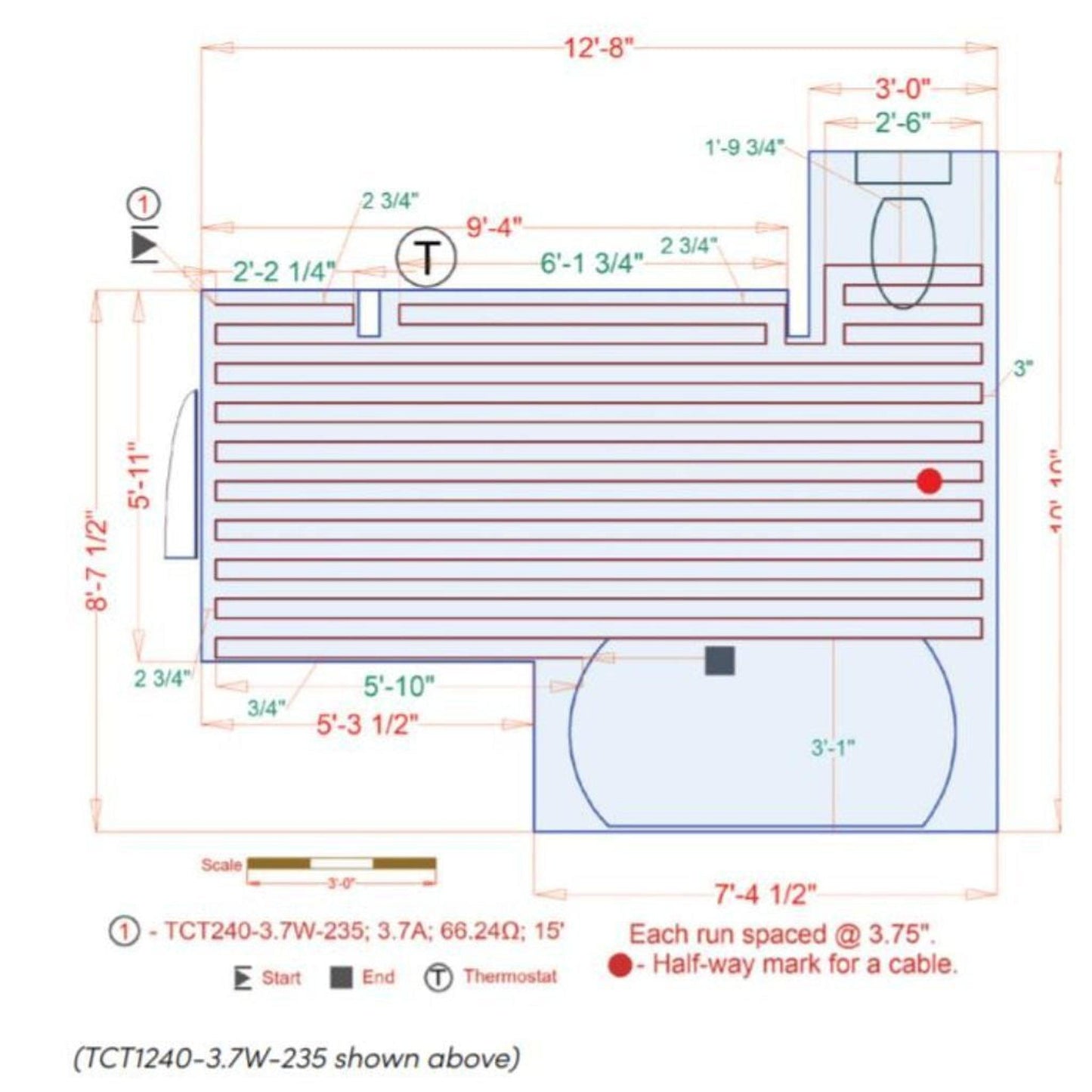
What our customers are saying...
-

What an excellent company and excellent products. Just like the old days when companies really cared about their customers, these guys are awesome!!!
Betty C.
Warminster, Pennsylvania
-

I was greeting in chat soon after logging into their web. She was genuine and very helpful in getting me the correct items I needed. The communication about shipping and tracking was great as well. My mind was at ease concerning my investment purchase! Thank you!
Jolene
San Jose, California
-

I've been extremely imporessed with the service--from the actual humans answeing phone calls to the accurate and prompt follow up, including and unrequested phone call to follow up on my order delivery requests.
Monica
Fairfax County, Virginia

















